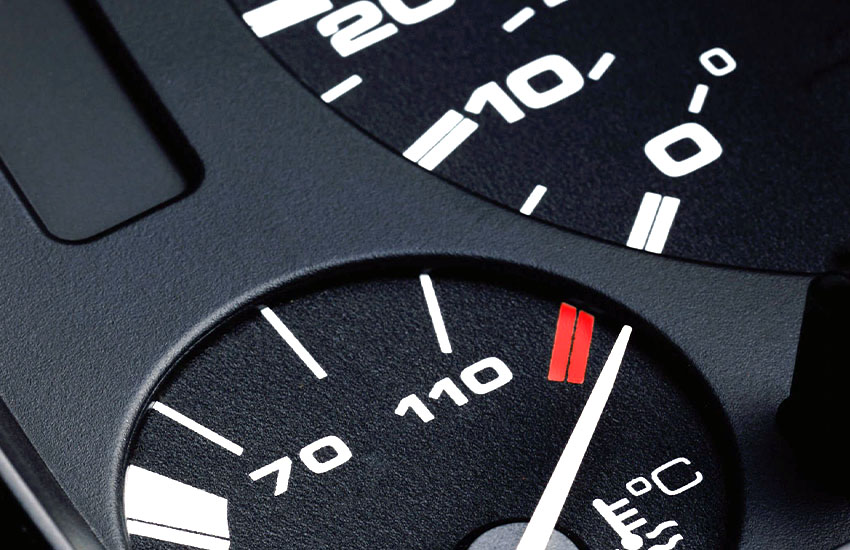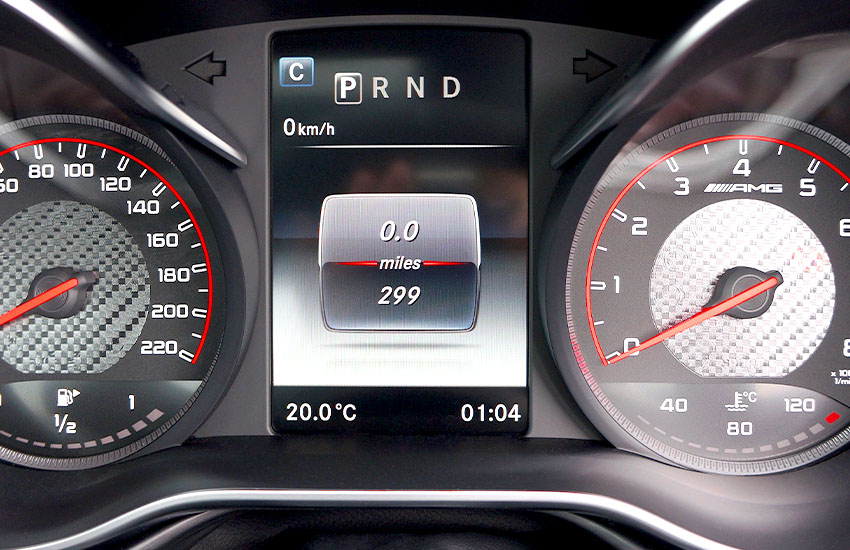The car temperature gauge dropping to cold while driving can indicate a malfunctioning thermostat or a coolant leak. This issue should be addressed promptly to prevent engine damage and ensure safe driving conditions.
Maintaining the proper temperature in a car’s engine is crucial for optimal performance and overall vehicle health. So, when the car temperature gauge unexpectedly drops to the cold end while you’re driving, it’s important to understand the potential causes and implications.
This issue can be a sign of a malfunctioning thermostat or a coolant leak, both of which require immediate attention to prevent engine damage and ensure safe driving conditions. We will explore why the car temperature gauge drops to cold while driving and explain the possible reasons behind this occurrence. By understanding the causes, you can address the issue promptly and prevent further damage to your vehicle.

Why Does The Car Temperature Gauge Drop To Cold?
The car temperature gauge dropping to cold while driving can be caused by a faulty thermostat, a coolant leak, or a malfunctioning temperature sensor. It is important to address these issues promptly to prevent overheating or engine damage.
Faulty Thermostat
Your car’s temperature gauge dropping suddenly to cold while driving can be quite alarming. One of the potential causes for this issue is a faulty thermostat. The thermostat is a vital component that regulates the flow of coolant in your car’s engine. It opens and closes according to the engine’s temperature, allowing coolant to circulate and maintain the optimal operating temperature.
If the thermostat gets stuck in the open position, it can cause the coolant to constantly circulate, which can lead to the engine running cold. As a result, the car temperature gauge may drop to cold. It is important to have a faulty thermostat replaced promptly to prevent further damage to the engine and ensure proper engine performance.
Coolant Loss Or Leak
An insufficient amount of coolant or a coolant leak can also cause the car temperature gauge to drop to cold while driving. Coolant is responsible for absorbing and transferring heat away from the engine. Without enough coolant, the engine can cool down too quickly, causing the gauge to indicate a lower temperature than normal.
Leaks in the cooling system can occur due to various reasons such as a damaged radiator, a cracked hose, or a faulty water pump. If there is a leak or loss of coolant, it is essential to identify the source and have it repaired immediately. Ignoring coolant leaks can lead to overheating, engine damage, and costly repairs.
Malfunctioning Temperature Sensor
The car’s temperature sensor is responsible for measuring the engine’s temperature and relaying the information to the temperature gauge on the dashboard. If the temperature sensor malfunctions, it may inaccurately read the engine’s temperature, causing the gauge to drop to cold.
A malfunctioning temperature sensor can be due to electrical issues, wiring problems, or sensor failure. Consulting with a professional mechanic is recommended to diagnose and fix the problem. They can test the sensor and replace it if necessary to ensure accurate temperature readings.
In conclusion, a car temperature gauge dropping to cold while driving can be attributed to various factors, including a faulty thermostat, coolant loss or leaks, and a malfunctioning temperature sensor. Addressing these issues promptly and seeking professional assistance will help ensure the proper functioning of your car’s cooling system and prevent further complications.
Signs Of A Cold Car Temperature Gauge
When the car temperature gauge drops to cold while driving, it can indicate potential issues with the cooling system. Recognizing the signs of a cold car temperature gauge is crucial for addressing the problem promptly and preventing any potential damage to the vehicle. Here are some indicators to look out for:
Coolant Warning Light
If the car’s temperature gauge drops to cold and the coolant warning light illuminates on the dashboard, this could signal low coolant levels or an issue with the cooling system. It’s important to address this promptly to prevent potential engine damage.
Overheating Engine
A cold car temperature gauge, coupled with an overheating engine, can indicate a malfunction in the thermostat or the cooling system. An overheating engine requires immediate attention and should not be ignored to prevent severe damage to the vehicle.
Poor Heater Performance
When the car’s temperature gauge remains cold and the heater fails to produce warm air, it can be an indication of a faulty thermostat or a lack of coolant circulation. This can lead to discomfort during driving and should be investigated promptly.
How To Address A Car Temperature Gauge Dropping To Cold?

Check Coolant Level
One of the first things you should check when your car temperature gauge drops to cold is the coolant level. Low coolant levels can prevent the engine from reaching its optimum operating temperature, causing the gauge to drop. To check the coolant level, follow these simple steps:
- Make sure your engine is cool before opening the hood.
- Locate the coolant reservoir, which is usually a translucent plastic tank marked with “coolant” or “antifreeze.”
- Check the coolant level against the markings on the reservoir. If it is below the recommended level, you may need to add more coolant.
- If you need to add coolant, make sure to use the type recommended by your vehicle manufacturer.
Inspect Thermostat
A faulty thermostat can also cause the car temperature gauge to drop to cold. The thermostat is responsible for regulating the flow of coolant through the engine, helping it maintain a consistent temperature. Here’s how you can inspect the thermostat:
- Allow your engine to cool down completely.
- Locate the thermostat housing, which is usually connected to the upper radiator hose.
- Remove the thermostat housing and carefully inspect the thermostat for any signs of damage or wear.
- If the thermostat appears to be faulty, consider replacing it with a new one.
Test Temperature Sensor
The temperature sensor in your car helps the gauge accurately measure the engine’s temperature. If the sensor is malfunctioning, it can give incorrect readings, causing the gauge to drop to cold. To test the temperature sensor, follow these steps:
- Locate the temperature sensor, which is usually located near the engine or the thermostat housing.
- Disconnect the sensor’s electrical connector.
- Using a multimeter set to resistance (ohms), test the sensor’s resistance by touching the meter’s leads to the sensor’s terminals.
- Compare the reading you get with the specifications provided by your vehicle manufacturer. If the reading is outside the recommended range, you may need to replace the temperature sensor.
If none of these troubleshooting steps resolve the issue, it is recommended to consult a professional mechanic who can diagnose and repair the problem. Remember, addressing a car temperature gauge dropping to cold promptly can help prevent potential engine damage and ensure your vehicle continues to run smoothly.
Conclusion
A sudden drop in your car’s temperature gauge while driving can indicate various issues. It’s important to address this concern promptly to prevent potential damage to your vehicle. By identifying the root cause and taking necessary action, you can ensure your safety and your car’s optimal performance.
Understanding the reasons for the temperature gauge drop will help you make informed decisions and maintain your vehicle’s health.


